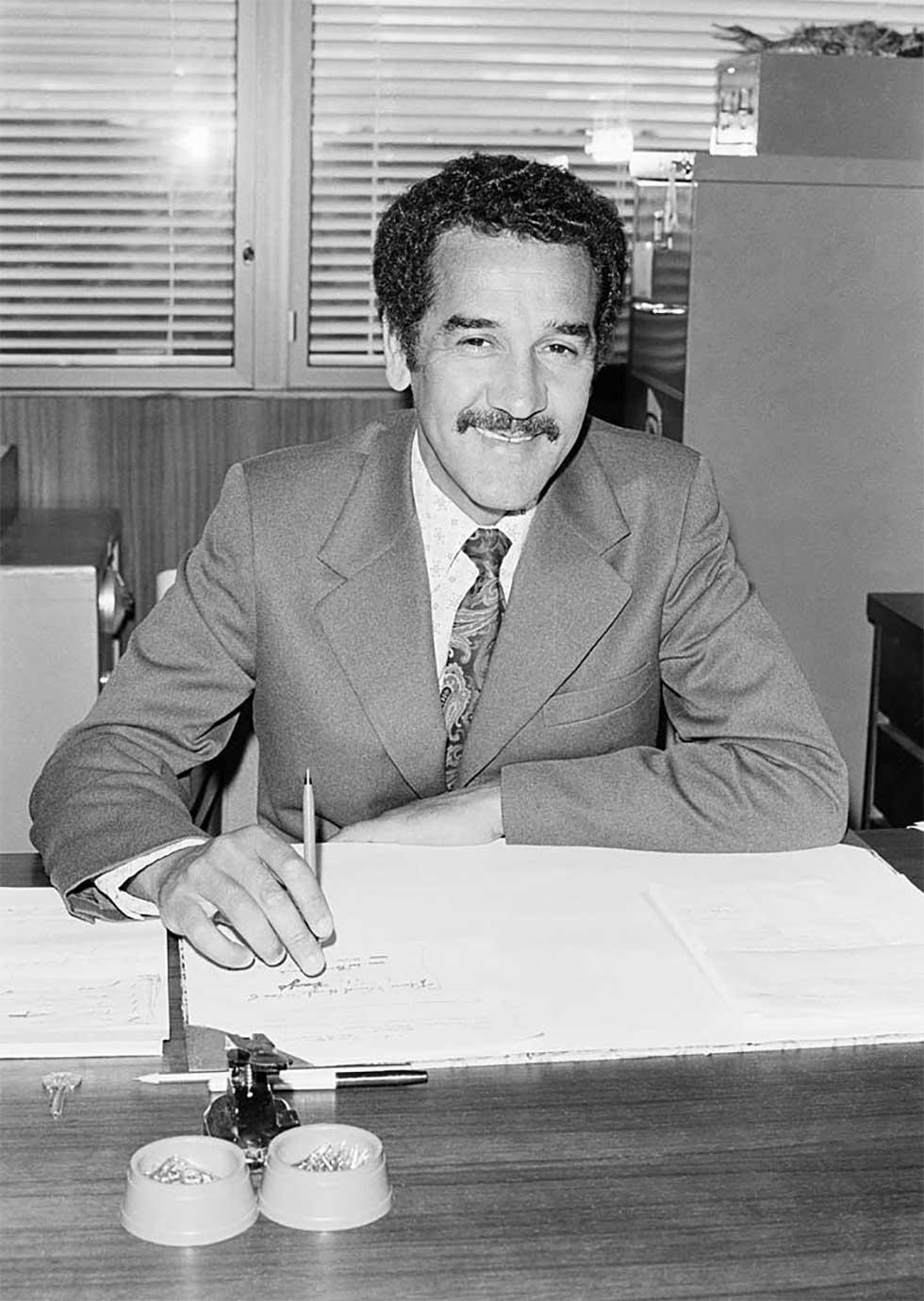


About this record
This posed black-and-white photograph shows the famous Indigenous activist, leader and public servant Charles Perkins seated behind his desk at the Department of Aboriginal Affairs (DAA) in Canberra. Perkins is portrayed smiling for the camera, pen in hand with work papers neatly set out before him.
Educational value
- In 1974, when this photograph was taken, Charles Perkins (1936–2000) was the most senior Indigenous person in the Commonwealth public service. Four years after his graduation from Sydney University in 1965, Perkins had joined the public service as a research officer in the Office of Aboriginal Affairs. In 1973 he was appointed to a senior executive position in the bureaucracy as the head of the Liaison and Consultation Branch in the newly created DAA.
- As the first identified Indigenous person to earn a university degree, Perkins was well placed to advise the Australian Government on Indigenous matters. In the years after the success of the 1967 referendum – which allowed the Australian Government to legislate for Indigenous people – many Indigenous leaders had come to believe that one of the best ways to ensure the government actually used its new power was for Indigenous people themselves to fill key bureaucratic roles.
- Bureaucratic regulations require public servants to work behind the scenes, advising the minister in charge of the department through official channels only, but Perkins was never that sort of bureaucrat. In 1999 he recalled 'You just couldn't sit back and watch people dying ... while you had a job as a bureaucrat ... where you had a nice house ... and other people had nothing of that and they were your own people. So you had to speak out' (https://www.nfsa.gov.au/collection/curated/australian-biography-charles-perkins-1).
- Perkins was a committed activist with a record of direct action, and from 1973 to 1975 he was constantly being reprimanded within the bureaucracy for speaking in public and leading demonstrations. Relations with the Minister for Aboriginal Affairs, Senator Jim Cavanagh, became so bad in 1974 that Perkins was temporarily suspended, and in 1975 he was forced to take a year's leave without pay. He returned to Alice Springs and supported his family doing odd jobs.
- Perkins' abilities and his standing in the Indigenous community were such that he was needed within the administration of the DAA at the highest level. In 1976 he returned to the DAA, and from 1979 to 1981 was second-in-charge of the department. After three years as Commissioner of the Aboriginal Development Commission, Perkins was appointed to head the DAA in 1984 – the first Indigenous person to become head of an Australian Government department.
- This photograph shows Perkins in good health, but this had not always been so. In 1970 his kidneys failed completely and by 1972 he was on 10 hours of dialysis three times a week. He was facing death when he received a kidney transplant. The transplant enabled him to fulfil his vow that if he survived he would really do something for Indigenous people without any fear of the consequences. Until his death in 2000, Perkins was the longest-surviving kidney recipient.
Acknowledgments
Learning resource text © Education Services Australia Limited and the National Archives of Australia 2010.
Related themes
Need help with your research?
Learn how to interpret primary sources, use our collection and more.




